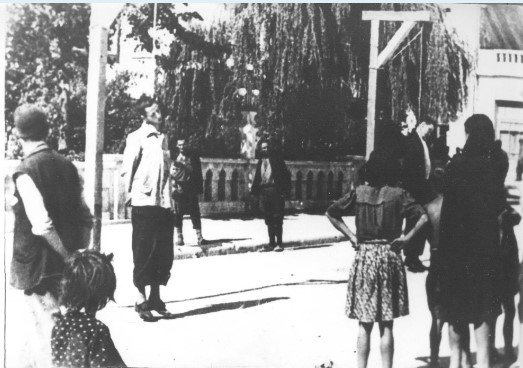
brochure "Partizanski spomenik u Mostaru" (1980)
book “Spomenica Mostara 1941-1945.”
another document or proof of the memorial stone (e.g., a photograph).
Drago D. PALAVESTRA
DRAGO PALAVESTRA, son of DUŠAN, born on May 20, 1925, in Mostar, a student of Gymnasium. A member of the League of Communist Youth (SKOJ) since 1941, an illegal activist, an active participant in the National Liberation War in Mostar. In the Battalion since July 1943. Fighter, captured in Kamena near Mostar in July 1943 while leaving Mostar with the detachment. Publicly hanged with a SKOJ member Alija Rizikalo in Mostar on July 15, 1943, in Musala Square, in the park next to Neretva Hotel “for participation in the Partisans”. Both bravely held on before their death, shouting: “Long live the Communist Party of Yugoslavia”, “Long live Comrade Tito”, “Long live the Soviet Union”. According to some sources, “later the policemen who attended the trial and hanging told that, in response to a cynical question whether he had any desires, Palavestra replied: ‘I would like Germans to hang from the lampposts from Mostar to Berlin.'” In an article, it is stated that, by order of the authorities, the bodies were left in that position until 11:00 pm on July 25, 1943. A group of SKOJ members was preparing to kidnap the hanged comrades, but the bodies were continuously guarded.
During those days, posters of the SS department commander were plastered on the city streets, stating: “Sentenced to death by the Summary Court in Mostar: Drago Palavestra, a student, 18 years old, from Mostar; Alija Rizikalo, a carpenter, 19 years old, unmarried, from Mostar. Palavestra worked as a gatherer for the Partisans. Under the pretext of false facts, he lured his schoolmates in the evening hours to the outskirts of Mostar, where they were regularly attacked by Partisans and taken away… Rizikalo did not respond to the call of the Croatian Army and thus became a military deserter, joining the Partisans.”
He was described as “fearless, despite being young and inexperienced.” According to the archives of Radmilo Braca Andrić, the remains of Drago Palavestra were transferred and buried in the Partisan Memorial Cemetery in Mostar. After the war, a Memorial Monument was erected at the site of Drago’s and Alija’s death. Drago’s name was recorded on a memorial plaque in Mostar Gymnasium. The plaque was removed at the beginning of the wartime events in 1992-1995. One street in Mostar was named after Drago after the war.
grupa autora: Spomenica Mostara 1941-1945; Ćemalović, Enver (1986): Mostarski bataljon, Mostar; Seferović, Mensur (1964): Partizanski kolopleti, „Narodna armija“, Beograd; grupa autora (1961): Hercegovina u NOB 1. dio, Beograd, Vojno delo ; група аутора (1986): Херцеговина у НОБ, Београд ; https://www.tacno.net/mostar/dani-antifasizma-u-mostaru-2/ ; Seferović, Mensur (1958): “Bataljon u okupiranom gradu”, Sarajevo; Seferović, Mensur: Mostarski kolopleti, edicija “Mostar u borbi za slobodu”, knjiga 8, Mostar; http://www.most.ba/091/015.aspx; https://poskok.info/mostarke-u-doba-okupacije-sloboda-nije-stigla-iz-bajke/; http://istorijskenovine.unilib.rs/view/index.html#panel:pp|issue:UB_00064_19520603|article:article587|page:6|block:ComposedBlock46 ; http://istorijskenovine.unilib.rs/view/index.html#panel:pp|issue:UB_00064_19450710|page:2|query:%D0%B4%D1%80%D0%B0%D0%B3%D0%BE%20%D0%BF%D0%B0%D0%BB%D0%B0%D0%B2%D0%B5%D1%81%D1%82%D1%80%D0%B0 ; članak “Ulica Drage Palavestre” Š Pašić (ustupio CIDOM)
Photos: S. Demirović (2018), https://www.youtube.com/watch?v=zl3W0gy7x5I&ab_channel=KnjOrg; https://www.xiwl.com/w/index.php/Mostar_-_Spomenik_Aliji_Rizikalu_i_Dragi_Palavestri ; https://znaci.org/fotografija.php?br=10620; https://znaci.org/fotografija.php?br=10559
Do you have more information about this fighter? Share your stories and photographs. Let's keep the memory alive!











